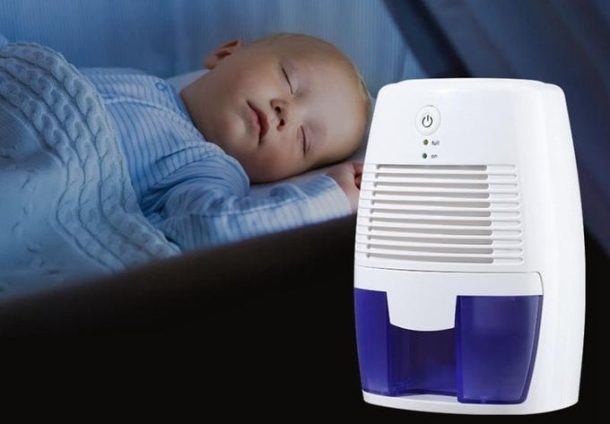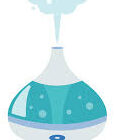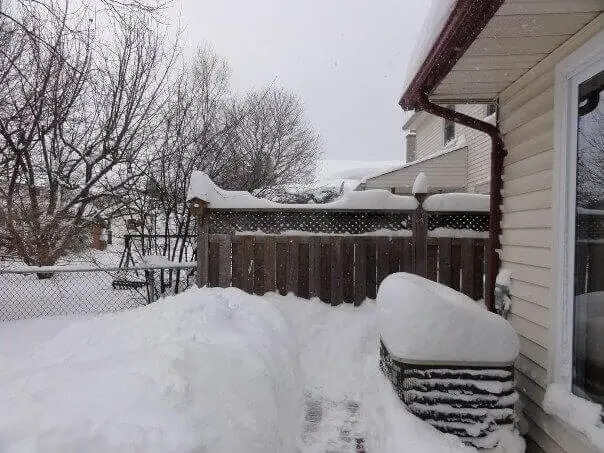Should I Use My Dehumidifier in the Winter? It Helps!
Usually, you run a dehumidifier in the summer, when there is a lot of humidity in the air. It is not common to hear advice about running it in the winter when the air is dry.
However, is it necessary to run a dehumidifier in the winter? Yes, you can if the conditions warrant it. However, you should make sure the room temperature is above 40°F because if it is lower than that, the dehumidifier coils could freeze. Therefore, you may have to run a dehumidifier and a heater at the same time.
In the summer, the air is usually warm and humid. Therefore, you should dehumidify your indoor air. In winter, it is supposed to be the opposite—cold and dry—but that is not always the case. You will see about that later.
Should you run your dehumidifier in the winter?

In winter, the air outside is dry. However, the air inside the home or office is not cold and dry. Rather, it is warm and moist.
During this time, the house is usually insulated from the outside elements. There is no air coming in or going out.
Since you are still using the kitchen, bathroom, basement, and laundry room, you are likely to have more humidity indoors.
The easiest way to notice an increase in indoor humidity is when you start to see condensation on the window panes.
The recommended level of relative humidity is 50 to 60%. Anything above that, and the humidity level is high. You can use a hygrometer to measure the humidity.
That is why it is necessary to run a dehumidifier. To get rid of excess moisture generated. When you run the unit, here is what you will get.
Benefits of running a dehumidifier in winter
Should a dehumidifier run all the time? Well, if there is high indoor humidity all the time, you should run it more often. However, be careful to only run it in rooms that generate humidity, such as the bathroom, kitchen, and basement.
In addition, it is best that you have a humidifier too, so that if the air gets too dry, you can increase the humidity level. Read this article on the best humidifiers for winter.
Better-quality air
A lot of humidity reduces the quality of the air because it may contain dust mites, mildew and mold. A dehumidifier gets rid of the excess moisture, therefore inhibiting the growth and spread of indoor allergens.
In addition, when there is too much humidity in the air, mold can grow in dark, moist places in your home. This serious indoor allergen also causes damage to walls, clothes, furniture, and other items.
Fewer respiratory infections
High humidity causes allergens such as dust mites, mold, and mildew to grow. These result in respiratory problems such as sneezing, a runny nose, and nasal congestion. These are similar to the humidifier illness signs.
High humidity can also trigger asthma or make it worse.
When you use a dehumidifier, it gets rid of the excess moisture. Therefore, it inhibits the growth of these allergens.
No damage to household items
Humidity can damage wood and cause mold to grow on garments. Removing the excess moisture ensures that your items remain intact.
When it is too cold, below 40°F, the dehumidifier may not work correctly because the cooling coils freeze. To counter this, make sure the home is warm enough. So, if you want to use the unit in the basement, use a heater first to raise the temperature.
To dehumidify the air in winter, first, make sure the relative humidity is high—in this case, above 50%. Then make sure the room temperature does not go below 40°F to prevent frosting of the cooling coils.
Keep an eye on the dehumidifier to make sure that the relative humidity and room temperature do not go below the recommended levels.
Conclusion
Is it necessary to run a dehumidifier in the winter? You have seen how important that is. However, do not remove all the moisture from the indoor air because it can affect your indoor plants.
The most important thing is to maintain the right level of indoor humidity all the time, whether it is summer or the cold season.
With a humidifier that is equipped with a humidistat, the indoor humidity level will never go below the recommended level.
If you need a good dehumidifier for winter, try one such as the Pro Breeze Mini Dehumidifier that you can buy on amazon.com.

